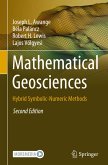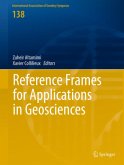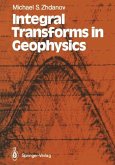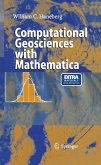This book collects all material developed by the Geomathematics Group, TU Kaiserslautern, during the few last years to set up a theory of spherical functions of mathematical (geo-)physics. The work shows a twofold transition: First, the natural transition from the scalar to the vectorial and tensorial theory of spherical harmonics is given in coordinate-free representation, based on new variants of the addition theorem and the Funk-Hecke formulas. Second, the canonical transition from spherical harmonics via zonal (kernel) functions to the Dirac kernel is presented in close orientation to an uncertainty principle classifying the space/frequency (momentum) behavior of the functions for purposes of constructive approximation and data analysis. In doing so, the whole palette of spherical (trial) functions is provided for modeling and simulating phenomena and processes of the Earth system.
Duringthelastdecades,geosciencesand-engineeringwerein?uencedbytwo essentialscenarios. First, thetechnologicalprogresshaschangedcompletely the observational and measurement techniques. Modern high speed c- puters and satellite-based techniques are entering more and more all (geo) disciplines. Second, there is a growing public concern about the future of our planet, its climate, its environment, and about an expected shortage of natural resources. Obviously, both aspects, viz. (i) e?cient strategies of protection against threats of a changing Earth and (ii) the exceptional s- uation of getting terrestrial, airborne as well as spaceborne, data of better and better quality explain the strong need for new mathematical structures, tools, and methods. In consequence, mathematics concerned with geosci- ti?c problems, i.e., geomathematics, is becoming more and more important. Nowadays, geomathematics may be regarded as the key technology to build the bridge between real Earth processes and their scienti?c understanding. In fact, it is the intrinsic and indispensable means to handle geoscient- cally relevant data sets of high quality within high accuracy and to improve signi?cantly modeling capabilities in Earth system research.
Duringthelastdecades,geosciencesand-engineeringwerein?uencedbytwo essentialscenarios. First, thetechnologicalprogresshaschangedcompletely the observational and measurement techniques. Modern high speed c- puters and satellite-based techniques are entering more and more all (geo) disciplines. Second, there is a growing public concern about the future of our planet, its climate, its environment, and about an expected shortage of natural resources. Obviously, both aspects, viz. (i) e?cient strategies of protection against threats of a changing Earth and (ii) the exceptional s- uation of getting terrestrial, airborne as well as spaceborne, data of better and better quality explain the strong need for new mathematical structures, tools, and methods. In consequence, mathematics concerned with geosci- ti?c problems, i.e., geomathematics, is becoming more and more important. Nowadays, geomathematics may be regarded as the key technology to build the bridge between real Earth processes and their scienti?c understanding. In fact, it is the intrinsic and indispensable means to handle geoscient- cally relevant data sets of high quality within high accuracy and to improve signi?cantly modeling capabilities in Earth system research.
From the reviews:
"This book concentrates the introduction of mathematical representation of spherical vector and tensor fields. Vector/tensor spherical harmonics are used throughout mathematics. This book is a valuable reference for scientists and practitioners when facing spherical problems." (Chengshu Wang, Zentralblatt MATH, Vol. 1167, 2009)
"This book concentrates the introduction of mathematical representation of spherical vector and tensor fields. Vector/tensor spherical harmonics are used throughout mathematics. This book is a valuable reference for scientists and practitioners when facing spherical problems." (Chengshu Wang, Zentralblatt MATH, Vol. 1167, 2009)








